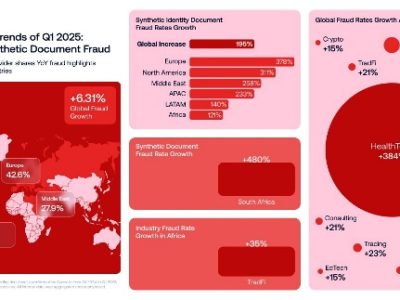Tenders are complex and competitive with multiple, highly-skilled organisations vying for the same projects and opportunities. This makes it key that companies stand out, showcasing their expertise and offerings in ways that underscore the invaluable tenets of cost-efficiency, quality, proven capability and productivity. Organisations have to find smart ways of emphasising their value and their capabilities, which is where standardisation can truly shine.
RELATED: Police to South Africans: Beware of Social media scams
“By implementing a framework that underscores how your organisation implements processes and systems that meet recognised international standards for quality, safety and efficiency, companies can redefine how potential customers perceive their work and their potential,” says Princess Bam, Business Manager, World Wide Industrial Systems Engineers (WWISE). “Companies across different industries can adopt very specific ISO standards to demonstrate their commitment to quality and compliance and this can stand them in good stead when it comes to competing for tenders.”
This view is echoed by Ian Naidoo, Tender Office and Marketing Manager at WWISE. He points out that industries such as manufacturing, construction, information technology, healthcare, and transport commonly use ISO standardisation to win tenders.
Manufacturing, construction, healthcare and transport can benefit from ISO 9001 as this provides a quality management system that focuses on meeting customer needs and improving processes. While companies in IT can benefit from ISO 27001 as this provides a framework for implementing and maintaining an information security management plan.
ISO 13485, the quality management for medical devices, and ISO 15189, the quality management for medical laboratories, can further support healthcare companies; and ISO 14001 and ISO 45001 can provide construction with additional support and value across environmental management and occupational health and safety respectively.
“Any industry can benefit from ISO standardisation as it provides a competitive edge and helps companies meet the expectations of their customers and stakeholders,” adds Naidoo. “Implementing these standards requires a commitment to establishing and maintaining a management system that meets the standard’s exact requirements while allocating adequate resources, documenting the system, implementing it, and consistently assessing and improving it.”
While following protocol to implement ISO standards within the business can ask for a commitment of time and resources, it offers ongoing value across tender development, and in delivering services to existing customers. ISO standards embed a level of trust into relationships and business performance as they show a clear commitment to adhering to internationally recognised regulations, best-practice performance and compliance mandates.
“ISO 9001 and ISO 28000 help make tendering easier and more effective as they demonstrate the organisation’s commitment to quality management and supply chain security management,” says Bam. “These certifications can give potential clients confidence in your organisation’s ability to deliver high-quality products or services. Some tenders may also require that your company have ISO certifications, so planning and implementing these frameworks in advance will give you a competitive advantage when bidding for contracts related to high-risk operations.”
For Bam, ISO 9001 and ISO 28000 are key frameworks for organisations to consider. ISO 9001 provides a set of guidelines that specify the criteria for establishing and maintaining an effective quality management system, and a structure for organisations to develop and implement procedures that meet customer expectations and demands consistently. Implementing ISO 9001 can result in overall enhanced business performance and a robust reputation, and this can be further supported by ISO 28000 for companies that operate within the supply chain.
The latter is designed to mitigate security risks in the supply chain through the development of a security management system based on a clearly defined risk assessment process. Organisations can use this ISO framework to prevent or reduce potential security risks and this translates into providing potential customers with immediate peace of mind when it comes to embedding security within the business as it can enhance overall business resilience and security best practices.
“The implementation of both ISO 9001 and ISO 28000 depends on their scope and focus and can be implemented across various departments in an organisation,” says Bam. “Successful implementation requires a collaborative effort across departments with the support and involvement of senior management, and can benefit departments such as finance, legal, risk management, supply chain and quality control. This ensures that the business is streamlined and standardised across almost every silo and adds immense depth and weight to any tender application.”
Naidoo concludes by saying that implementing these standards can provide benefits that go beyond compliance with each ISO standard’s requirements. Organisations can save time and money by improving efficiency, customer satisfaction and risk management while enhancing their credibility and increasing their chances of winning tenders.
COVER IMAGE: Sakeliga





























